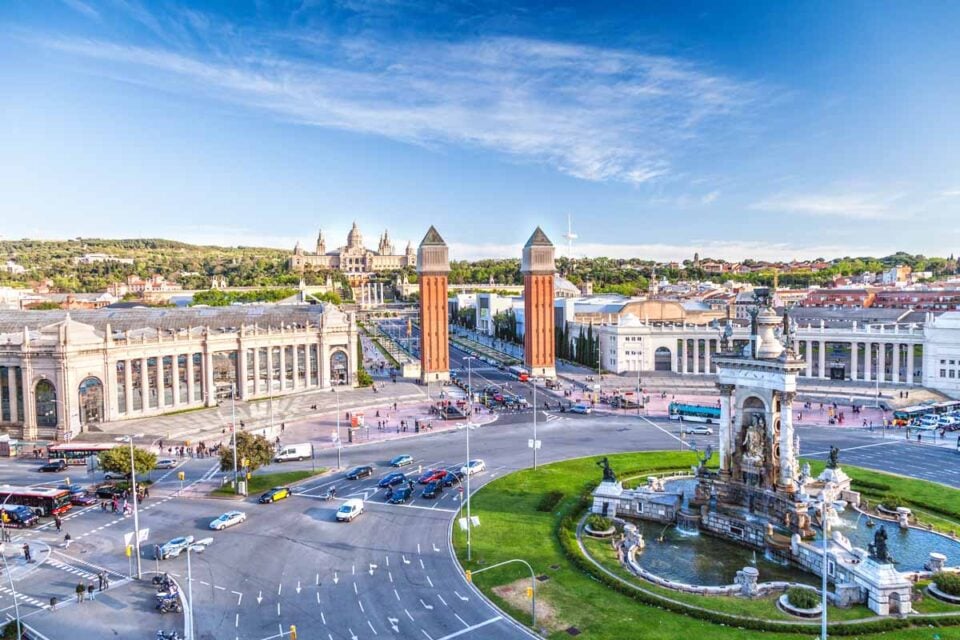The Mediterranean coast is home to many large and small, well-known and lesser-known, luxurious and modest resort towns. Among this diversity, Barcelona stands apart. Bright, contradictory, proud, and, of course, extraordinarily atmospheric, it is a city of geniuses, unrecognized and recognized talents, and, of course, art enthusiasts. A city that can rightfully be called the resort capital of the Mediterranean. However, even with all this diversity and magnificence, sometimes one wants to embark on a car journey through Spain, starting the route from Barcelona and discovering new corners of Catalonia and beyond every day.
Where to Stay in Barcelona
Barcelona is a large city with hotels of various star ratings, from luxurious to budget, found in almost every district. There are more than 200 hotels in total, not including numerous apartments, hostels, and campsites. Despite this, it’s essential to book accommodation in advance during the season. A distinctive feature of Barcelona’s five-star hotels is that they often include design hotels and so-called “boutiques.” Even here, the typical love for art in the Catalan capital is evident. Interestingly, these hotels often feature avant-garde designs. As for prices, they vary — from 200-300 euros per night for a double room in luxurious hotels in the city center to 5-10 euros for a “bed” in hostels. Here, everyone can choose according to their preferences, and fortunately, there is a wide selection.
Car Rental in Barcelona
If you plan to travel through Spain independently, the most convenient way is to rent a car — there are many companies in Barcelona that provide such services. Managers are usually ready to communicate with clients in advance, book a car for specific dates, and even deliver it to the airport parking lot at the specified time. The fee for this is usually symbolic. However, it’s better to find out about parking options during your trips in advance — parking in Spain is expensive, and spontaneity in this matter can be very costly, literally.
Barcelona Attractions
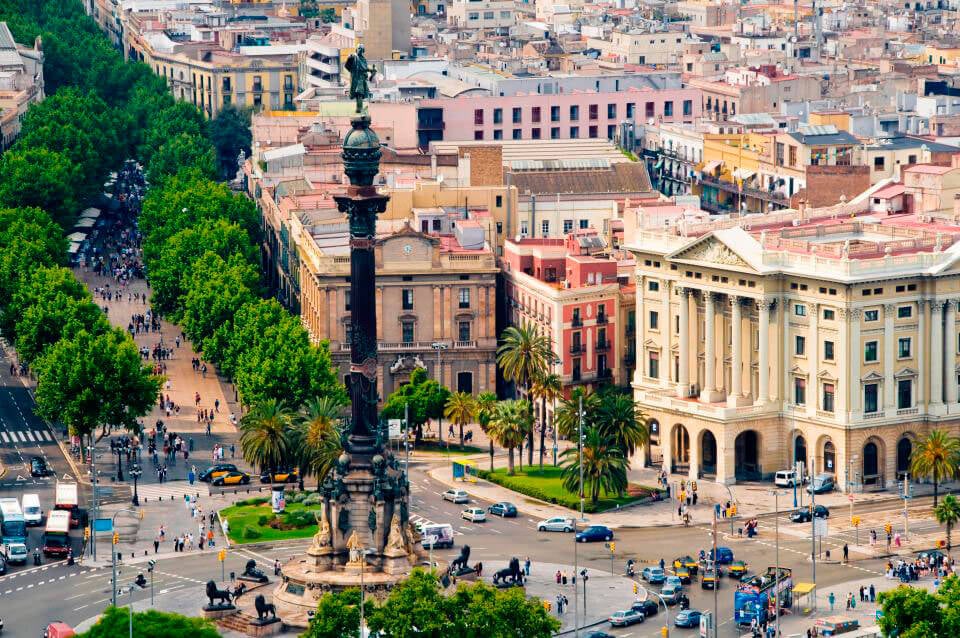
Where to start exploring Barcelona? This question might not even be answered by seasoned travelers who have visited the city multiple times. Some prefer to stroll along the always lively La Rambla, others to admire the view from the Columbus Monument, some to be amazed by the legendary Sagrada Familia, and others to enjoy the tranquility (yes, it’s possible even with hundreds of tourists around) of Park Güell. Barcelona has many landmarks that have become symbols of the city. However, despite the diverse “must-see” collage, one still has to highlight something essential. If asked where to go in Barcelona if only an hour is available for sightseeing, it would probably be La Rambla. Why? Because it is as contradictory as the Catalan capital itself.
At first glance, it seems cheerful and carefree. But if you look closely at the sad faces of the living statues, turn right (if walking from Plaça de Catalunya towards the waterfront) and find yourself at the Boqueria Market, colorful and devoid of any capital flair, or turn left, walk a few blocks and come across the Cathedral, serving as the archbishop’s residence and built in the 15th century (though it began even earlier, in the 13th century), it becomes clear that La Rambla, like Barcelona itself, is much deeper. Lines from the Russian poet N. Rylénkov come to mind: “Here, it’s not enough to hear, you need to listen… Here, it’s not enough to see, you need to look closely…” This is about it — the central pedestrian street of Barcelona.
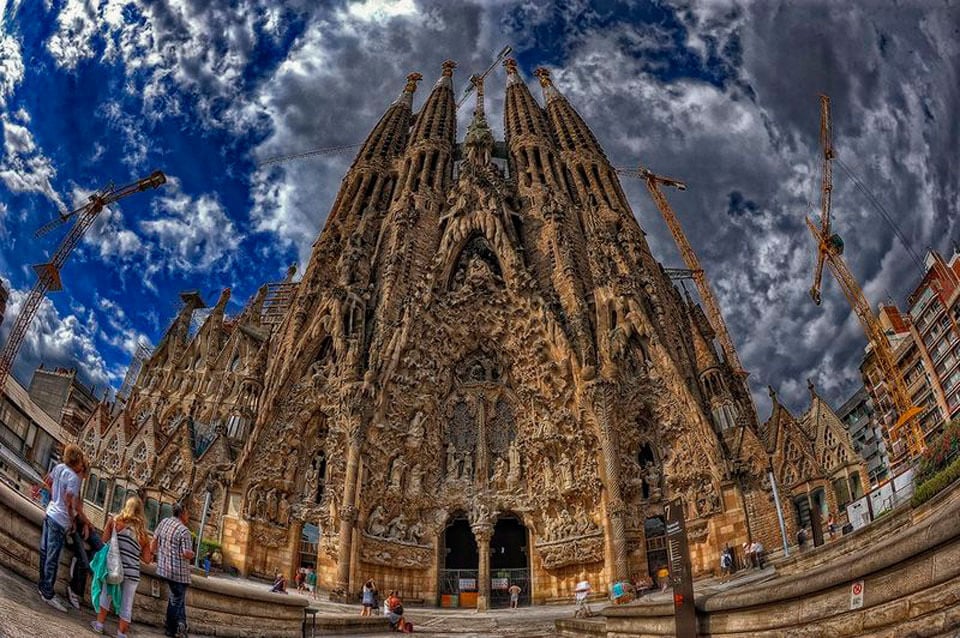
If there is something contradictory, ambiguous, but invariably captivating and striking the imagination (in terms of architecture, of course), it is the Sagrada Familia, or as it is also known, the Temple of the Holy Family. It is truly unique — a structure that holds memories of many historical events (construction began in 1882) and at the same time resonates with modernity, connecting epochs and generations with an invisible thread. It should be noted that this is the only case in architectural history where an unfinished long-term construction (completion dates have been postponed multiple times, currently set for 2026) attracts millions of tourists and enjoys tremendous popularity.
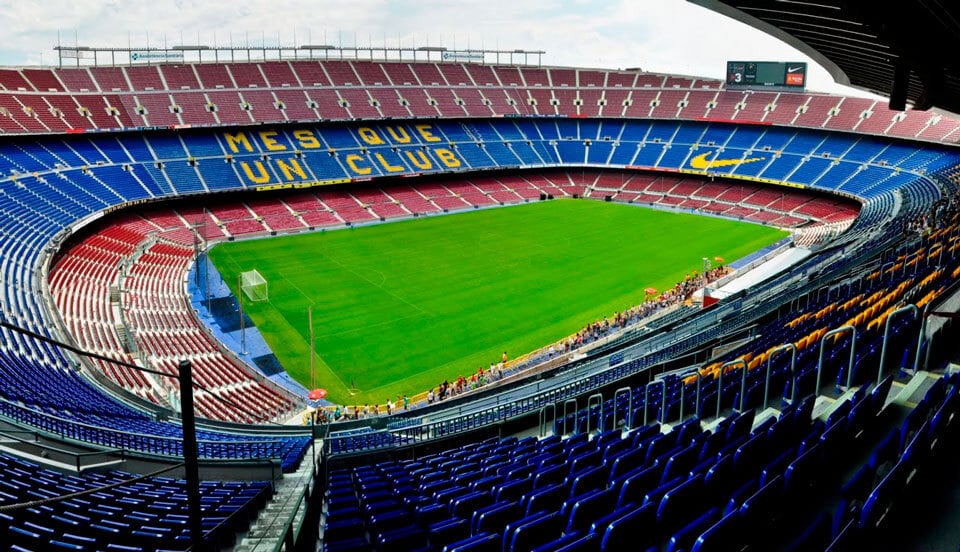
Finally, to understand Barcelona, one cannot ignore the famous Camp Nou stadium. Football for the capital of Catalonia is like a second air, and it is not surprising that the beloved team is treated with reverence and respect. It is no coincidence that the slogan “More than a club” adorns the stands. During the tour, guests can sit in the stands, visit the commentary box, and walk to the edge of the field. And, of course, explore the museum exhibition. Of course, these are not all the attractions of Barcelona. The Olympic Park, Casa Batlló and Casa Milà, Park Güell, the magnificent old port, the Picasso Museum, the mysterious Gothic Quarter… The list goes on, and what you manage to see depends solely on the time available. There is enough interest here for more than a week.
How to Save in Barcelona?
Everyone knows that Barcelona is an expensive city. If there is an opportunity to save money, why not take advantage of it?
- Skip-the-line tickets to the Sagrada Familia and Park Güell
- Airport transfer to and from Barcelona or a one-way transfer from Girona Airport – allowing you to quickly and comfortably reach the city center
- Hop-On Hop-Off bus tickets
- 20% discount on tickets to the best museums (including Picasso, Joan Miró, MNAC), attractions (including Casa Milà, Casa Batlló, and Camp Nou), excursions, and bike tours, as well as the Hola Transport card
Barcelona — Lloret de Mar — Girona — Vila-Sacra
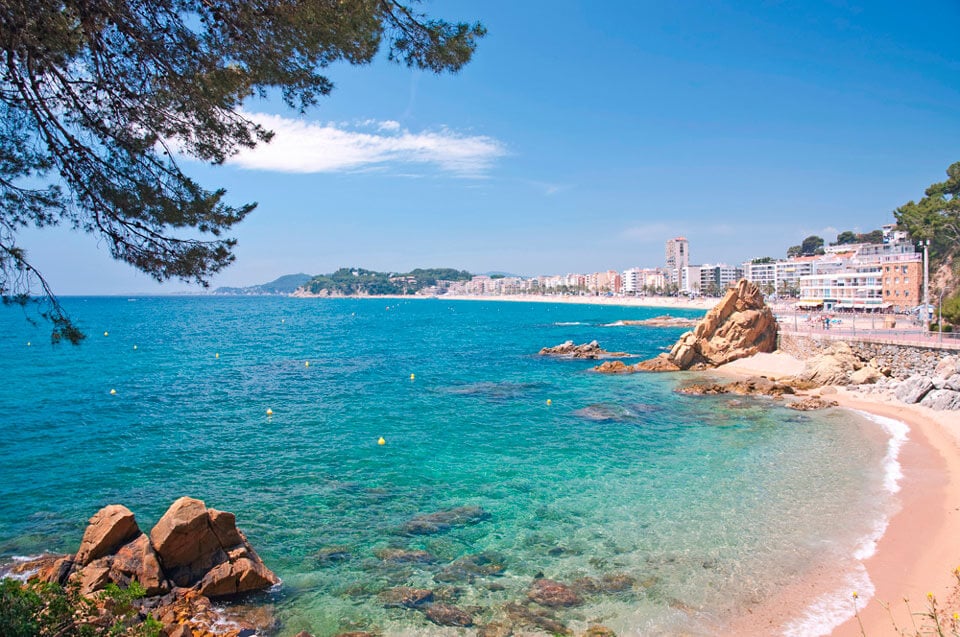
Deciding to embark on an independent car tour from Barcelona, many tourists first head towards Lloret de Mar. Especially since you can visit several interesting cities in one day. Traveling just 70 kilometers, travelers find themselves in a completely different reality. Despite the resort’s popularity, a calm and serene atmosphere prevails here. Additionally, Lloret de Mar has plenty of attractions — the San Juan Castle, located on the coast and becoming the hallmark of the Costa Brava, the romantic Chapel of Santa Cristina, the city’s patron saint, the Gardens of Santa Clotilde, and more. For those who decide to spend the night in Lloret de Mar, the town reveals a completely different side. As the sun sets, it comes alive, and the streets that seemed quiet and peaceful during the day turn into one big party. Bar hopping can go on until dawn. The main thing is not to overdo it with cocktails, especially if you plan to continue your journey in the morning.
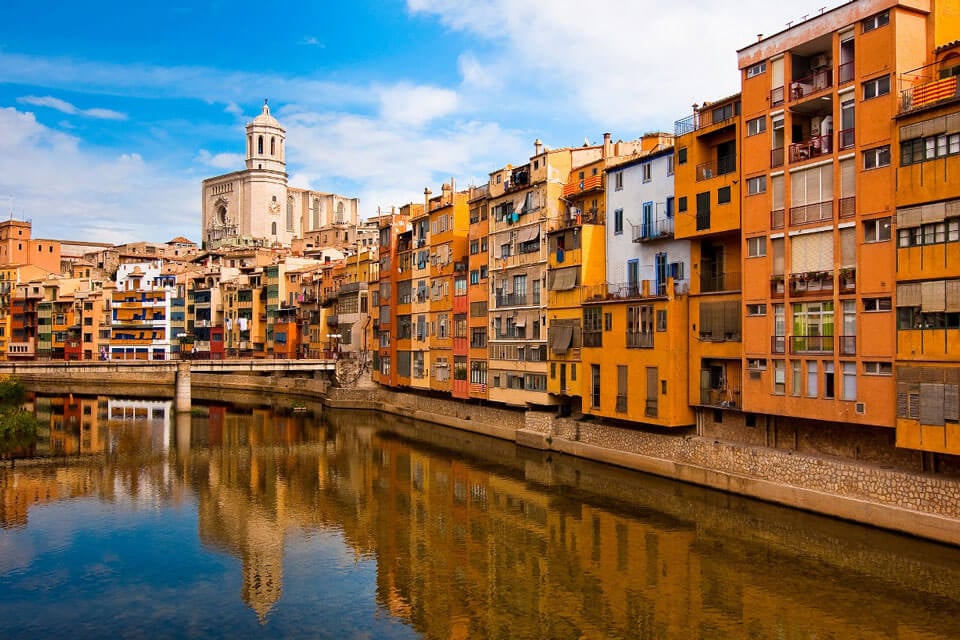
The next stop for many travelers is Girona, just 35 kilometers away. It is often called the immortal city (the city fortress managed to withstand 25 sieges over its history, which is quite impressive!), the Spanish Florence, and even the city of Salvador Dalí (although the museum dedicated to him is not here but in Figueres). Girona is not as well-known and popular as its neighbor Barcelona, but it is no less beautiful. The best way to start exploring Girona is with a walk through the Old Town. Small picturesque 17th-century houses with colorful facades along the Onyar River are always captivating and reminiscent of days gone by (some compare them to Florence, and there is indeed a resemblance), and Plaça de Catalunya, which looks like a wide bridge connecting both banks, is very unusual and even mysterious. And, of course, one cannot miss the medieval Cathedral, construction of which began in the distant 14th century.
Vila-Sacra is just 20 kilometers from Girona. Why visit this small cozy village? At least to breathe the air of the Spanish province, experience the national cuisine (not tourist-oriented, but genuinely local!), and stay in a cozy hotel to set off in the morning with renewed energy to continue discovering beautiful Spain.
Vila-Sacra — Empuriabrava — Besalú — Castellfollit de la Roca

Lingering in Vila-Sacra is unlikely to appeal to curious tourists — a couple of hours of an evening walk is enough to cover the entire village. Therefore, in the morning, after having breakfast at the hotel, you can set off to the bohemian shores of Empuriabrava. This resort town is often called the Spanish Venice. It is entirely “cut” by canals, with a total length exceeding 35 kilometers — a world record. Like in Venice, luxurious villas have water access — locals often travel by yachts and boats. However, you can also reach any point in Empuriabrava by land transport. Overall, it is a very atmospheric town, and a walk here will surely provide many positive emotions and vivid impressions.
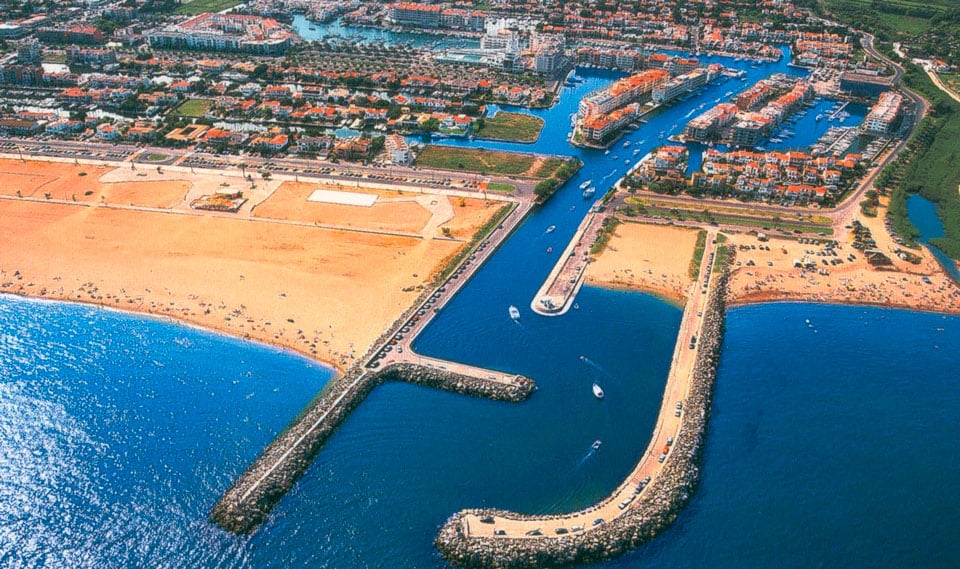
The resort’s main attractions are its beaches. Wide, sandy, almost endless… There are essentially two — one developed and one wild. Despite Empuriabrava’s popularity, there is enough space under the sun for everyone, even during the peak tourist season. However, lovers of architectural masterpieces might be disappointed by this town. It is not old, and there are no significant landmarks here. However, in the medieval town of Besalú, first mentioned in the 10th century, there are plenty. It would be more accurate to say that the entire town is one continuous landmark. It is small, covering only 5 square kilometers, and you can explore every nook and cranny in 2-3 hours. City landmarks include El Castel Castle and the bridge over the El Fluvia River. However, not only these but every house and alley remind visitors of its former grandeur.
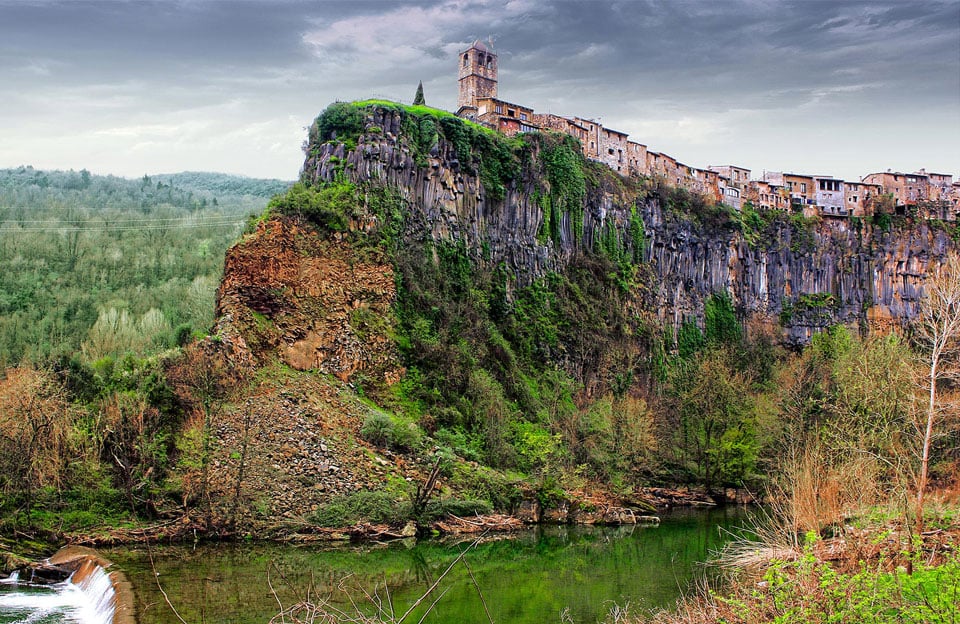
After soaking in the charm of days gone by, you can move on. Just 15 kilometers from Besalú is the village of Castellfollit de la Roca, known far beyond Spain. It is remarkable primarily because it is located right on a cliff. It was built in the distant Middle Ages. This explains its unusual architecture and numerous buildings worth attention. Among them, the Church of San Salvador and its museum particularly stand out. From the observation deck, you can enjoy stunning panoramic views of the surroundings. Overall, Castellfollit de la Roca is not just picturesque — it seems lost in time. Walking along its narrow streets, you start to believe that a brave knight in armor or a lady in a magnificent dress will appear around the corner. Fortunately, there are very few tourists, and the guides’ stories do not disrupt this mysterious atmosphere. However, as beautiful as this mountain village is, it is unlikely to captivate curious travelers for more than 2-3 hours. Therefore, you can return to Vila-Sacra in the evening to continue your journey in the morning and see a different side of Spain — the Pyrenees.
Vila-Sacra — Seira, Pyrenees
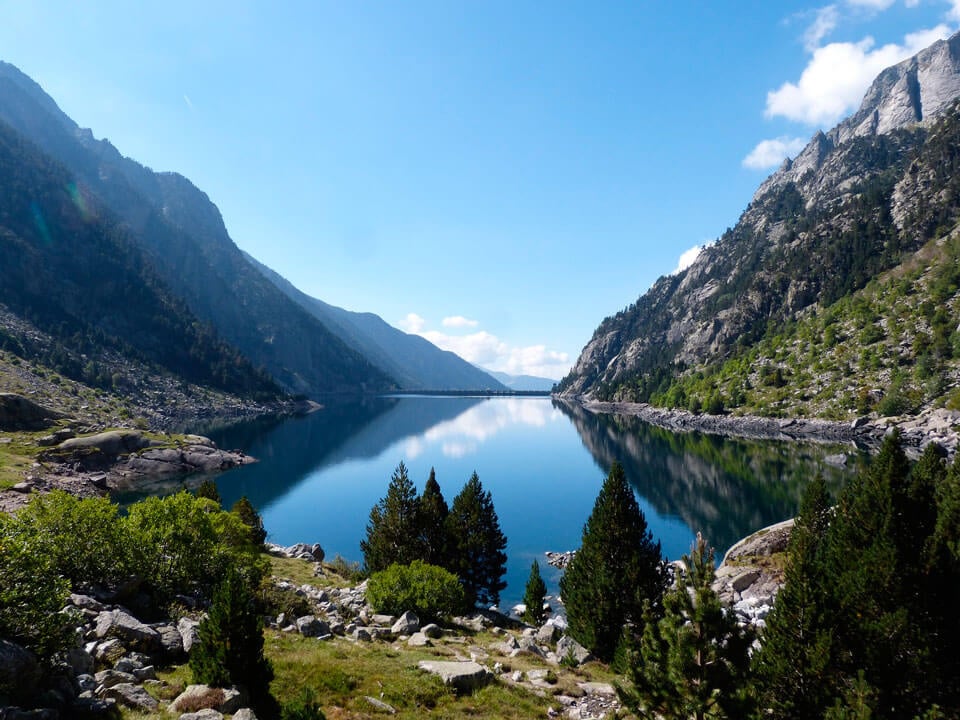
From Vila-Sacra to Seira is not so close — about 350 kilometers. However, the roads in Spain are good, and the journey can be completed in 4-4.5 hours. Why, when deciding to visit the Pyrenees, should you stop here? Firstly, because Seira is a very cozy, picturesque village where you can get acquainted with national traditions and immerse yourself in the unique spirit of the Spanish province. Secondly, accommodation here is inexpensive — for the price of a three-star hotel room in Barcelona, you can rent a two-story apartment with a view of the mountains. In terms of attractions, Seira itself does not offer much. There are simply none. However, the surrounding areas are worth visiting. The first place to go is the dam at Lake Estany De Cavallers. It is considered the most equipped and convenient for viewing. The structure itself is impressive in scale. Additionally, the dam offers breathtaking views.
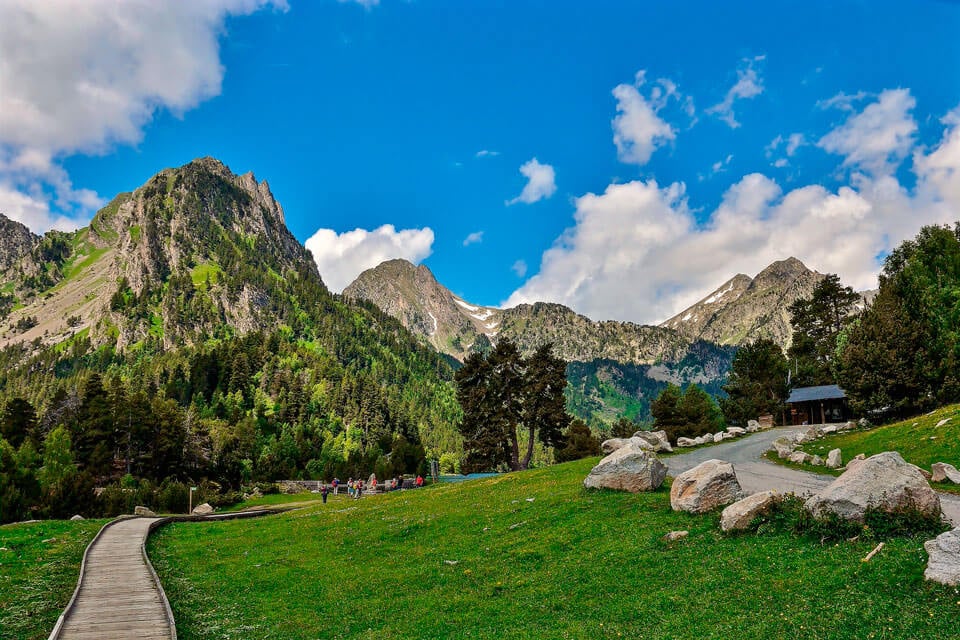
Admiring nature can be done almost in solitude — getting to Estany De Cavallers is not easy, and only those with their own transport can reach it. This is why there are not many tourists here. Near the dam, there are simple rest areas (wooden tables and benches), but if you want to relax and have a picnic, you should stock up on supplies in advance — there are no shops or other retail points here. Near the lake is the Aigüestortes National Park. It is notable primarily because several trails for short treks run through it — the easiest, designed for unprepared tourists, can be completed in 2-3 hours. Along the way, you encounter fast mountain rivers, slopes reaching for the clouds, and almost abandoned bridges. Occasionally, you can see lonely houses in the distance. The landscapes are complemented by solitary cows with bells — almost Alpine romance. Although Pyrenean landscapes are not at all like the Alps. They are beautiful in their own way, captivating and breathtaking.
While enjoying the beauty, do not forget about returning home — from Aigüestortes to Seira is not far, only 80 kilometers, but the road is quite challenging — a narrow serpentine. It is better to complete it before sunset.
Seira — Benasque
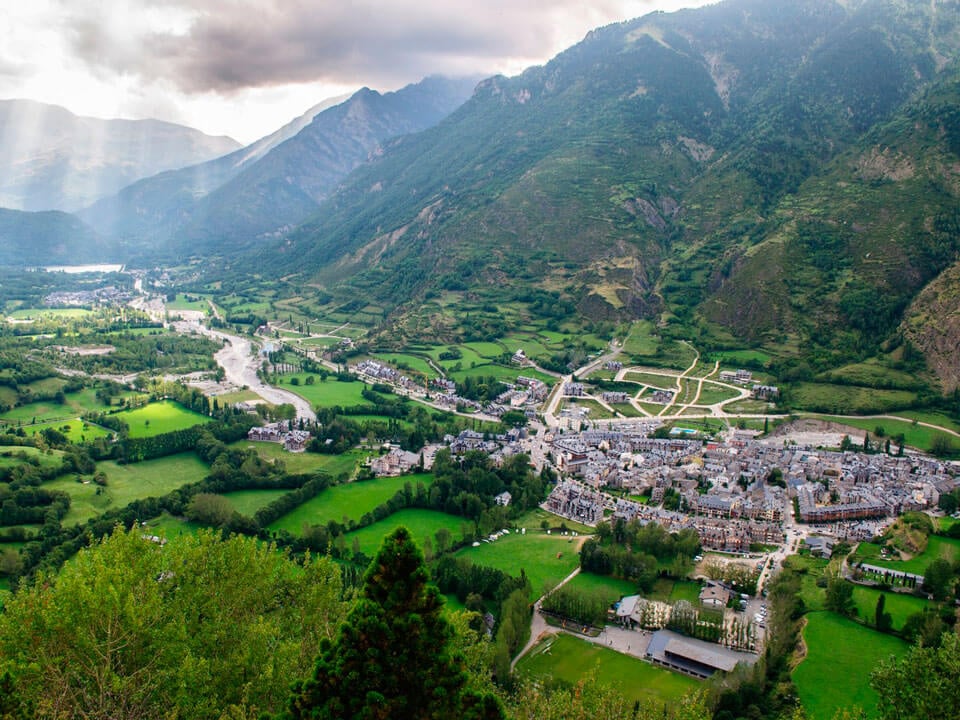
Just 22 kilometers from Seira is a place known to every winter sports enthusiast — the ski resort of Benasque. In winter, during the peak season, it is packed with tourists. But in summer, in this small town with a population of 2,000, seemingly lost among the Pyrenean peaks, it is peaceful and quiet. The surrounding area offers several trekking routes of varying difficulty — designed for both amateurs and professionals experienced in hiking. The beauty of the surrounding landscapes amazes even seasoned travelers — glaciers, lakes, waterfalls… no photograph can capture all the grandeur and splendor. Benasque is not just a modern ski resort. The town has an interesting history, and it is no surprise that its streets are home to many architectural landmarks. Among them are the Palace of the Counts of Ribagorza, Casa Juste, Casa Faure, and Casa Marcial del Río. It is evident that this place has always attracted Spanish nobility. Additionally, the 13th-century Romanesque Church of Santa María la Mayor is worth attention.
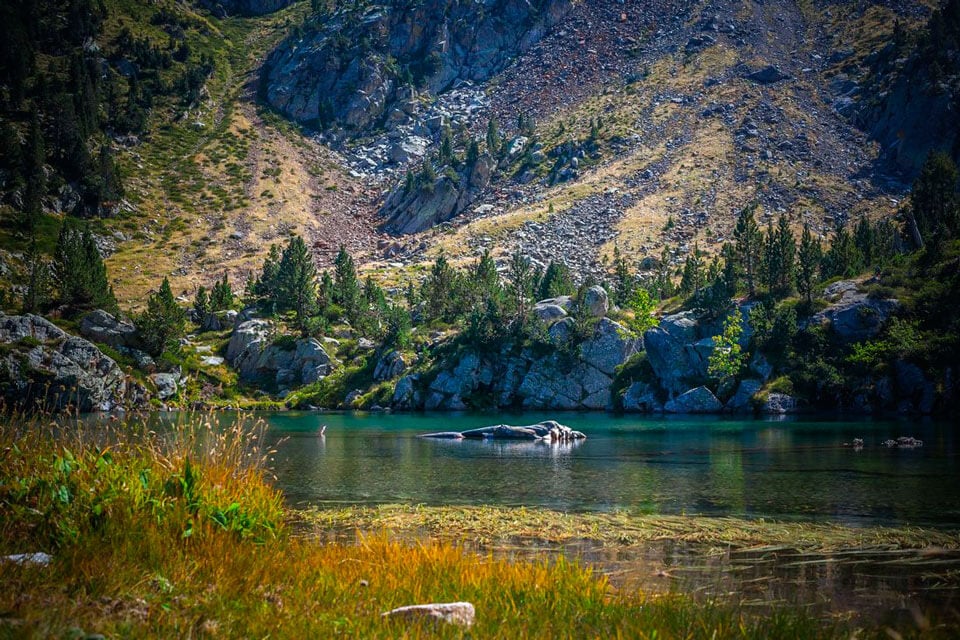
The Seira-Benasque road is not long, only 22 kilometers, but deviating just a few meters from the main route, you can find truly magical places. One such place is the dam at Lake Presa de Benasque. Although the dam itself is closed to visitors, there is an observation deck nearby offering a beautiful panoramic view of the dam, a tunnel through the rock (common in the Pyrenees), and the lake. Another must-see spot is Lake Escarpiñosa and the surrounding Posets-Maladeta Park. Many consider it the most beautiful place in the Pyrenees. In any case, nature lovers and beautiful landscapes will not be indifferent.
End the day by staying in one of Benasque’s hotels (summer accommodation prices are very attractive since the resort is empty) or returning to Seira — continuing the journey from there is more convenient.
Seira — Montserrat — Castelldefels
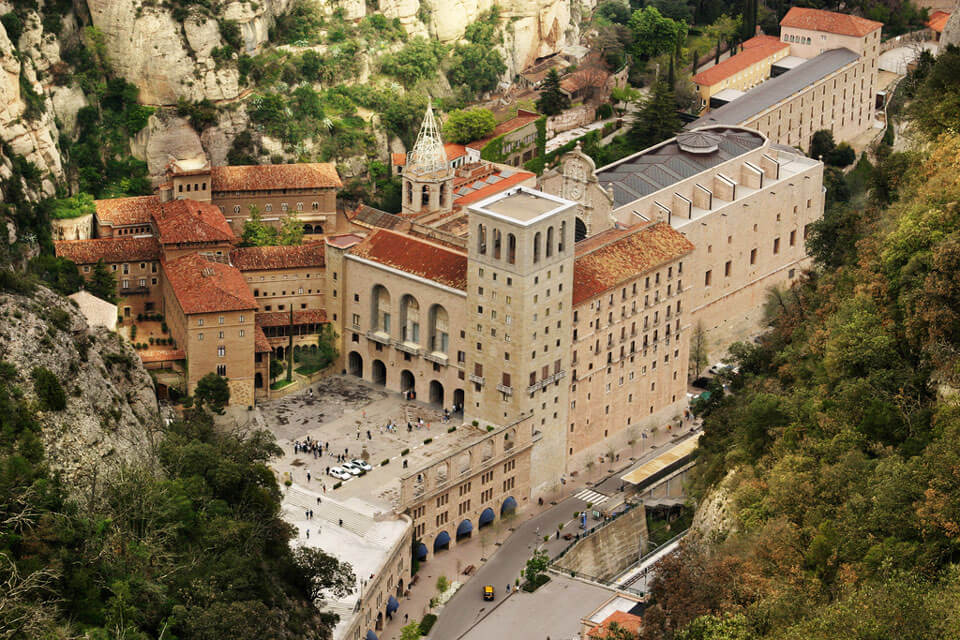
Of course, these are not all the interesting places in the Pyrenees, but if you are limited in time, you can consider the essential route completed. On the way to Barcelona, there is a place you cannot miss. It is the spiritual center of Catalonia, the holy of holies for locals and Catholics worldwide — the Montserrat Monastery. It is known primarily for housing the statue of the Black Madonna of Montserrat. The monastery’s history began more than 1,000 years ago. Since then, it has been considered active, although currently, there are not many monks, no more than 20 people. The monastery has a small museum where you can learn about its history. Architecturally, Montserrat Monastery is interesting because it was almost entirely rebuilt in the 19th century with the participation of the famous and controversial architect Antoni Gaudí. Here, he successfully implemented his ideas related to the unity of man and infinite harmony.
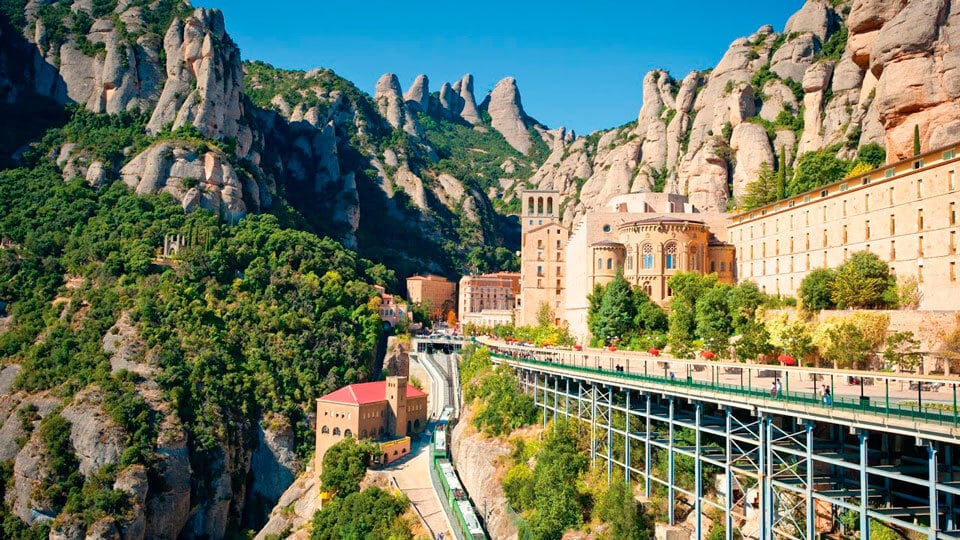
Montserrat Monastery is located in a very picturesque place. Several trekking routes run through its surroundings — for the convenience of tourists, there are signs everywhere, so getting lost is impossible. Moreover, they pass through the most scenic spots and are designed for tourists with different levels of physical fitness — even those who are not sporty can handle the simplest routes.
How much time to allocate for visiting Montserrat Monastery? Some people are satisfied with a few hours, while others are ready to stay forever. For those who decide to stay overnight, there is a hotel near the monastery. However, the prices are not low, being tourist-oriented.
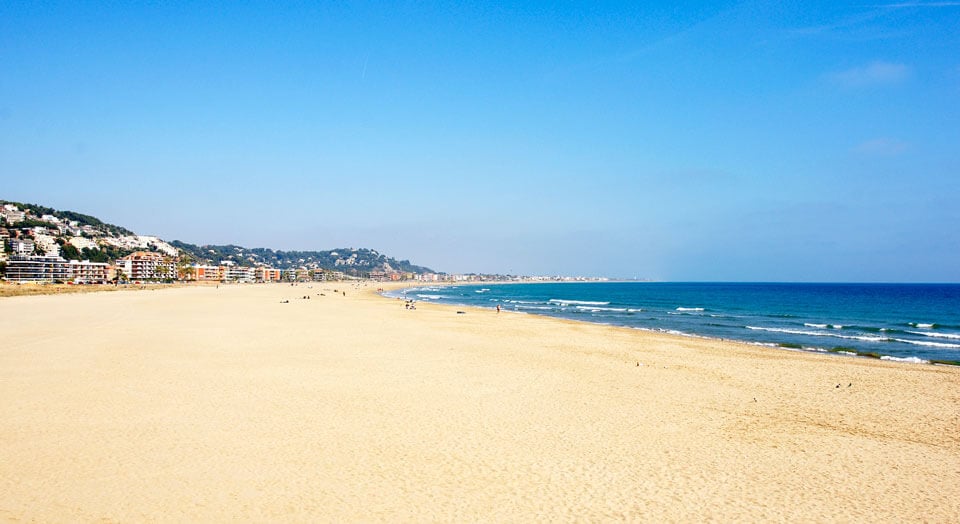
After exploring the monastery and breathing in the air of the sacred place, you can return to the coast. Back to Barcelona? Of course, you can, but there are still many beautiful places in Catalonia to visit. For example, the small and very cozy town of Castelldefels. It is known primarily for its endlessly long beach — an excellent place to put the final point and bid farewell to beautiful Spain. Moreover, there are many restaurants with various cuisines — from national Catalan to Japanese. Seafood dishes are considered the local specialty. If you are lucky enough to visit Castelldefels in July or October, you can participate in a pirate party or the chestnut festival, which are renowned throughout Catalonia.
Of course, this is not the only “Spanish” route you can take from Barcelona by car. Catalonia and neighboring regions are rich in attractions, natural parks, and various interesting places. Spain is diverse, colorful, and invariably hospitable. Each traveler discovers it in their own way, but every tourist inevitably leaves a piece of their soul here.

